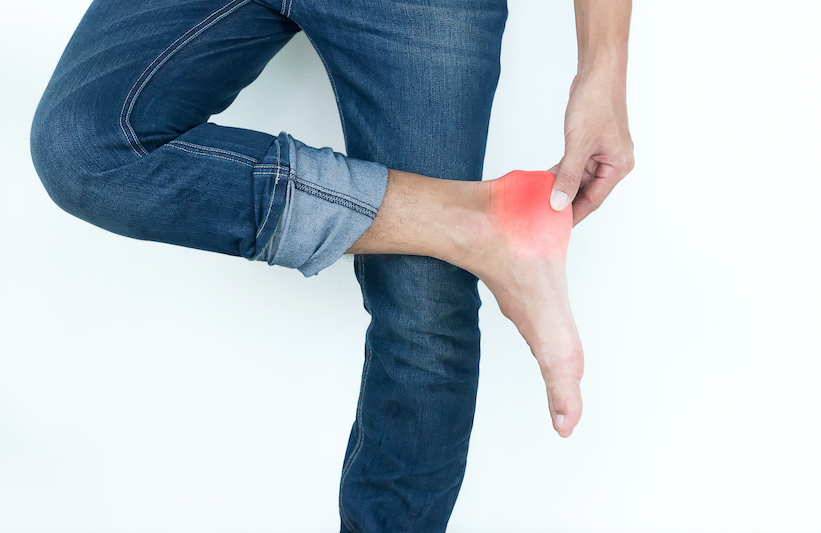Searching for Foot and Ankle Treatment in Visalia or Hanford?
Physical Therapy Is The Fastest Way To Regain Your Abilities After A Foot Or Ankle Injury
Regardless of your activity level, you need your feet and ankles to work properly in order to get around. Perhaps even more so than the hips and knees, these body parts are essentially the vehicles that allow us to move and navigate the world around us.
This is why any injury to this region of the body can be seriously detrimental, as experiencing pain with each step can interfere with doing the things you love or possibly drain your motivation to engage even in basic activities. There are several injuries and conditions that can develop in the foot or ankle, and each one has the potential to slow you down. But they have something else in common as well: all of these injuries can be effectively treated with a comprehensive course of physical therapy.
Physical therapists are movement experts that guide patients through a variety of active and passive interventions that will go on to alleviate pain and help patients regain their abilities. Below, we offer a brief summary of some of the more common foot and ankle injuries and highlight key components of a typical physical therapy program for each.
Ankle Sprain & Treatment
- An ankle sprain occurs any time the foot twists or rolls beyond its normal range of motion; in most cases, this happens when a player lands on another player’s foot wrong or twists their ankle when making a cutting motion in sports
- A sprain means that one of the ligaments in the ankle—which connect bones to one another—has stretched too far or was torn from this force
- Physical therapy highlights
- RICE (Rest, Ice, Compression, Elevation)
- Gentle stretching exercises
- Strengthening exercises
- Sport-specific training (when applicable)
- Ankle bracing
Plantar Fasciitis & Treatment
- The plantar fascia is a flat band of tissue that connects your heel bone to the toes and supports the arch of your foot
- Plantar fasciitis is the inflammation of this structure, and it typically results from training too hard or wearing unsupportive shoes
- The main symptom is a sharp, stabbing pain at the base of the heel that’s worst during the first steps of the morning
- Physical therapy highlights
- Gait assessment
- Stretching and strengthening exercises
- Foot taping, shoe orthotics, and supportive footwear
- Gait training
Achilles Tendinitis, Tendinosis, Tendinopathy & Treatment
- The Achilles tendon connects your calf muscle to the back of the heel and is used when you walk, run, and jump
- Achilles tendinitis occurs when this tendon gradually becomes inflamed, usually after an individual makes sudden changes to their training regimen
- Symptoms include an ache in the back of the leg or above the heel that is painful after waking up and when going up or down stairs
- Physical therapy highlights
- Calf-strengthening exercises
- Stretching exercises
- Manual (hands-on) therapy
- Pain-relieving modalities
Tarsal Tunnel Syndrome
- The tarsal tunnel is a structure made up of bone and ligament tissue on the inside of the ankle; tendons, blood vessels, and the posterior tibial nerve run through it to serve the foot
- Tarsal tunnel syndrome occurs when this nerve is compressed as a result of excessive stress on the foot and ankle
- Symptoms include pain, numbness, tingling, weakness, and swelling in the ankle and foot
- Physical therapy highlights
- Nerve gliding activities
- Muscle strengthening exercises
- Balance and coordination activities
- Orthotics, taping, and bracing
Jones Fracture
- A Jones fracture is a break of the fifth metatarsal, which is the bone that connects your pinky toe to the rest of your foot
- It results from a forceful blow to the bottom or outside of the foot, usually from landing from a jump improperly
- Symptoms include pain, swelling, and discoloration on the outside of the foot, and difficulty walking or bearing weight
- Physical therapy highlights
- Treatment can only begin after the fracture has healed (6-8 weeks)
- RICE (Rest, Ice, Compression, Elevation)
- Balance exercises
- Range of motion and strengthening exercises
- Gait training
Sever’s Disease
- This overuse injury results from inflammation of growth plates in the heels of young athletes, usually during growth spurts, because the heel bone grows faster than the surrounding muscles, tendons, and ligaments
- Sever’s disease is more common in boys than girls
- Symptoms include swelling and redness in the heel, as well as discomfort and difficulty walking
- Physical therapy highlights
- Activity modification
- Manual (hands-on) therapy
- Posture and functional training
- Gentle calf stretching exercises
- Passive modalities (eg, ice and electrical stimulation)
Any of these conditions has the potential to throw your routine out of synch and cause you disability and distress, but we can help.

